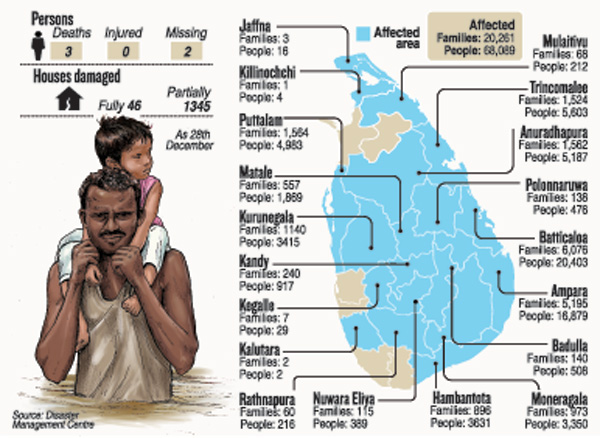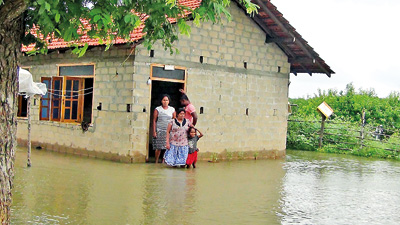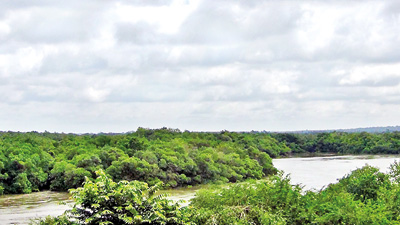News
Sri Lanka facing climate crisis rather than climate change, warn experts
Action plans are in place to combat climate change in Sri Lanka but experts fear it is irreversible and has already raged well out of hand.
“Our country lacks strong policy on climate change that fits its status as a highly vulnerable country, said Vidhura Ralapanawe, environmentalist and climate researcher. “If we do not address both mitigation and adaptation, the money earmarked for development will end-up spent on disaster recovery.”
The warnings come amidst alarming shifts in Sri Lanka’s climate leading to repeated cycles of natural disaster including floods, drought, landslides and cyclones. Those who don’t know the science behind climate change just don’t understand the severity of the issue, Dr Ralapanawe said.
“We should be calling this climate crisis rather than a climate change because we are currently in a severe crisis with very little time to act,” he emphasised.
The Global Climate Risk Index 2019 analyses countries and regions affected by weather impacts. Using the most recent data available (1998-2017), it found that the countries and territories most hit in 2017 were Puerto Rico, Sri Lanka and Dominica.
The Index looked back at the heavy landslides and floods here in May 2017 after strong monsoon rains in South-Western regions. More than 600,000 people were displaced in 12 districts and more than 200 died in the worst rains since 2003.
Lack of information and inadequate attribution studies on climate are among reasons why people have the wrong idea, said Lareef Zubair, Principal Scientist at the Foundation for Environment, Climate and Technology.
The significant rate at which the global temperature has risen has had a huge impact on Sri Lanka,’ Dr Zubair said. This includes bleaching of coral reefs, declining stream flow into many rivers originating in the Western hill slopes and low levels of water storage in reservoirs. Ocean heat waves have killed most of the coral reefs on the Southern coast between 1996 and 1998. Recently, in 2010 and 2016, the Kalpitiya reef has experienced destruction.
Sea levels are now rising at 4mm per year, with the rate increasing exponentially, Dr Ralapanawe said. This can cause low lands to submerge in water quickly, especially during high tides and storm surges.
Sri Lanka’s Climate Change Secretariat is now revising and updating the Nationally Determined Contribution (NDC) on climate change to submit to the UN by end of 2020. This is how a country decides what it can individually do to combat the challenge, Dakshini Perera, the Secretariat’s Assistant Director.
“We submitted a report on mitigation and adaptation in 2016, the final draft is on implementation and we are hoping to submit this report soon,” Ms Perera said.
Sri Lanka now has a National Adaptation Plan for Climate Change Impacts (NAP), prepared in line with the broad set of guidelines set forth by the United Nations Framework Convention on Climate Change (UNFCCC). It covers adaptation needs at two levels–those of key vulnerable sectors and the cross-cutting national needs of adaptation.
The nine vulnerable sectors are: Food security, water, coastal sector, health, human settlements, biodiversity, tourism and recreation, export development and industry-energy-transportation.
From this year the NAP will be evaluated with workshops conducted to educate and create awareness among the public of climate change.
The Intergovernmental Panel on Climate Change (IPCC) says global warming must be limited to 1.5°C by the end of this century to avoid irreversible and catastrophic impacts. For this, carbon dioxide (CO2) emissions need to decline by about 45 percent by 2030 and reach net zero in 2050. This requires urgent and unprecedented social and economic transformation.
Corals will be particularly badly hit. “Coral reefs are very high in biodiversity, and their destruction leads to significant death of species in that habitat,” Dr Ralapanawe said. “It is a huge tragedy. This will also affect people’s livelihood, fishing and tourism included.”
In 2019, the IPCC cautioned that climate change has already affected food security in many lower-latitude regions, yields of some crops like maize and wheat have declined, while in many higher-latitude regions, yields of some crops like maize, wheat and sugar beets have increased over recent decades. Climate change has also resulted in lower animal growth rates and productivity in pastoral systems mainly in Africa.
The concentration of carbon dioxide in the earth’s atmosphere is now 412 parts per million (ppm) – a level not seen in more than 800,000 years of history. And it is rising by about 3.5ppm annually. The primary cause is fossil fuel combustion, including coal and petroleum,.
“We must look beyond fossil fuel combustion to generate electricity and transportation,” Dr Ralapanawe stressed. “We must use renewable energy and generate electricity in a healthier way, both in Sri Lanka and globally.”
Early last month, the US Embassy’s Air Quality Monitor in Colombo recorded 167 Air Quality Index (AQI) and by morning of November 6, 2019 the readings rose to 173 by 8.30 am. Despite the fluctuations during the later hours, data continued to indicate an unhealthy level of air quality during that week.
Sri Lanka has been experiencing air pollution for “quite some time” but there was insufficient equipment to gather the real time data so not much attention was paid to the challenge, said Sarath Premasiri, Senior Scientist of the National Buildings Research Organisation.
The reasons for recent air pollution included local sources, such as vehicle and industry emissions as well as pollution of other countries entering the atmosphere. The problem was prevalent mostly in November, December and January owing to change in wind direction, said Mr Premasiri.
There is a decline in rainfall on the Western slope and this is causing concern, said Dr Zubair. It was partly caused by pollution in the atmosphere–particles increase the number of cloud droplets which stops these from becoming large enough to fall as rain.
Over the last five decades, rainfall on the South-West slopes has also declined by 20 per cent, causing stream flow into rivers to decline. This will cause a loss of hydro-power, disrupt livelihoods of the farmers and impair our ecosystem including the wildlife.
| Rains to return in January after small respite | |
| While the incessant rains are likely to subside in coming days they will resume in the first week of January, the Met Department said this week.  Gange wadiya, Kalpitiya And the areas of Galle, Matara, Colombo, Kalutara and the Sabaragamuwa province will continue to receive isolated rains of less than 50mm in the evenings. By December 26, a total of 21,034 families–12,795 of them in the Eastern Province alone–had been affected in floods caused by heavy monsoonal rains, the Disaster Management Centre (DMC) reports. Nineteen districts were hit but are now returning to normalcy. Only residents of areas at risk of landslide were in welfare centres this week with others having gone back to their homes. The DMC will pay up to Rs 250,000 for each damaged house after assessment and estimation. Landslide warning–including slope failures and rock falls if rains exceed 75mm–have been issued for Badulla, Bandarawela, Welimada, Hali-Ela, Uvaparanagama, Ella, Haldummulla, Passara, Lunugala, Haputale, Soranathota Divisional Secretariat Divisions of the Badulla district, Badalkumbura, Medagama, Bibila Divisional Secretariat Divisions of the Monaragala District, Balangoda and the Imbulpe Divisional Secretariat Divisions of the Ratnapura Districts.  Jaffna  Puttalam Pix by Amila Gamage and Hiran Priyankara
|

